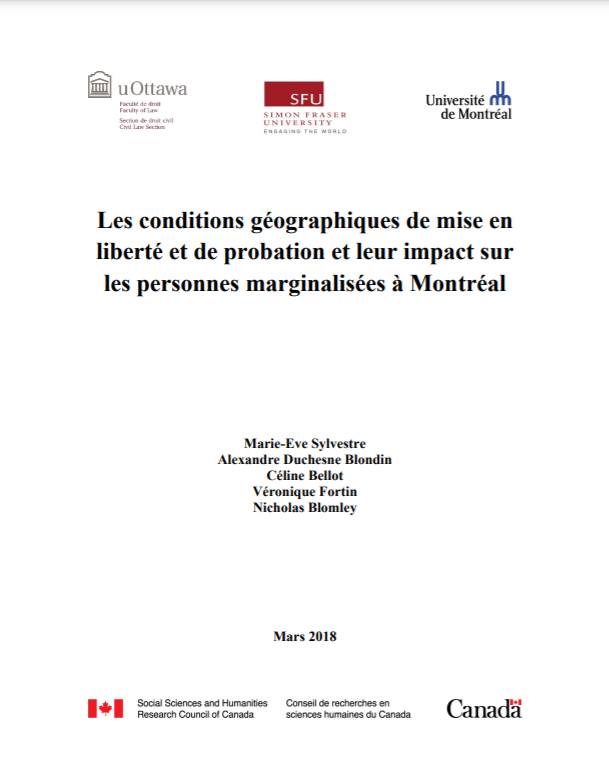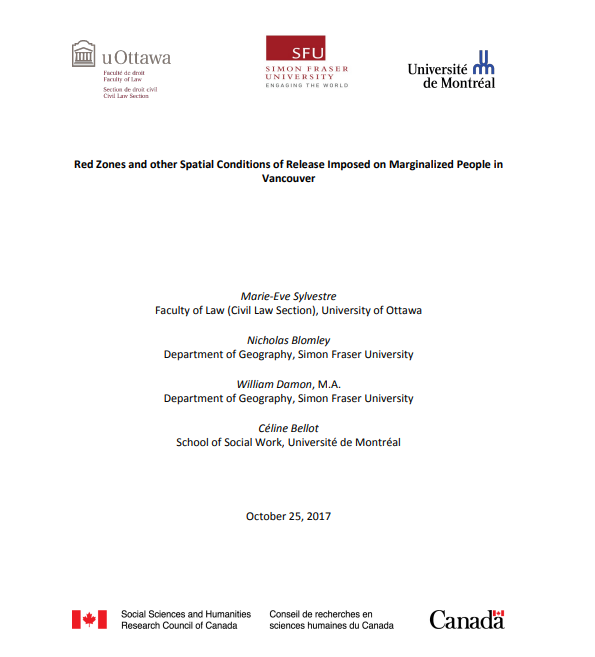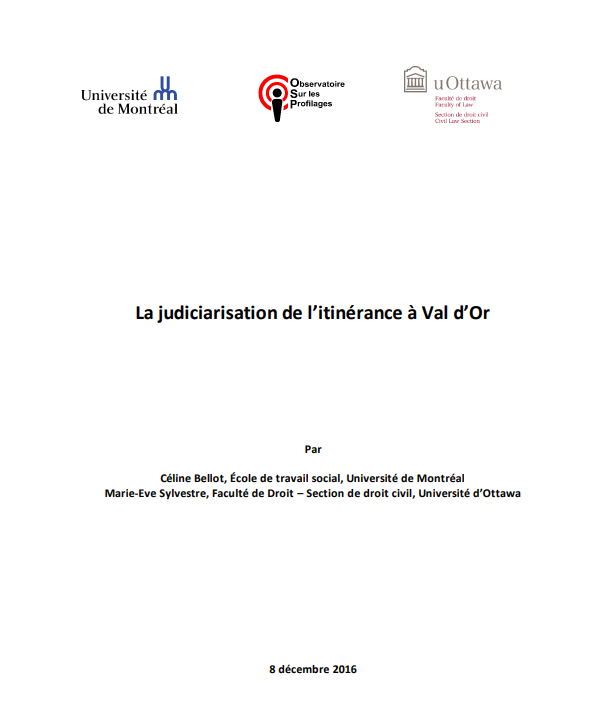Consultez le rapport en anglais sur Vancouver
This report provides findings on a research project focused on conditions of release with
spatial dimensions, such as area restrictions or ‘red zones’, no go orders, no contact,
non-association and residential conditions, and curfews, imposed at the bail or at
sentencing stages to marginalized groups of people, including the homeless, street-level
drug users and sex workers and political protesters, who use public spaces in four
Canadian cities (Montreal, Ottawa, Toronto and Vancouver). We focus here on the
Vancouver findings
Our main findings include:
- Conditions of release associated with bail and sentencing conditions have become increasingly pervasive, in line with an increase in community supervision more generally in B.C.
- Simultaneously, there has been a significant increase in offences related to such conditions, such that failure to comply with conditions and breach of probation represented 79% of all police-reported offences against the administration of justice committed in 2014. Such trends are evident in Vancouver, particularly in relation to the Downtown Eastside.
- Policy makers in B.C. have expressed concern at this phenomenon, pointing to the urgent need for more sustained analysis.
- Data from the JUSTIN database reveal the following:
- Red zones and no go orders represent 20% of all conditions imposed throughout criminal proceedings (from bail to conditional sentence)
- Red zones are mostly imposed in the context of drug (33.5%) and violent (34%) offences
- Conditional orders including red zones generate numerous breaches. In turn, breached orders generated on average between 1.5 to 2 additional breaches.
- Contrary to the prescriptions of the Criminal Code requiring unconditional release, 97% of all bail orders in Vancouver included conditions of release
- 53% of all bail orders issued in drug offences included a red zone
- In Vancouver, red zones are concentrated in the Downtown Eastside
- The number of conditions (4+) and the length of court orders (more than 190 days) have a statistically significant positive impact on the likelihood that someone will breach his or her court order. Residential treatment and curfews tend to decrease the likelihood of breaching a court order. While at bail, the number of conditions and the length of the court order are the main factors, in a probation order, the imposition of red zones conditions and curfews significantly increase the likelihood of breach. Breaches of probation orders are also higher in the case of drug offenses.
- There is a significant disjuncture between the attitudes and assumptions of legal actors, and those subject to conditions of release, including the application of red zones
- For the former, conditions of release are useful regulatory weapons that reduce crime and promote rehabilitation. For the latter, they do little to address crime, and may in fact promote further offences, due to the likelihood of breaches, and the increased risk of negative police encounters and detention.
- For the former, conditions of release are reasonably crafted. For the latter, they are often punitive, ambiguous, and arbitrary.
- For the former, conditions of release are responsive to individual needs. For the latter, they threaten valued access to personal connections and valued resources.
- For the former, the frequency of breaches is often unavoidable. For the latter, it is a predictable outcome of the ‘revolving door’ effect of such conditions.
- Red zones and other conditions of release lead to multiple rights violations yet they are rarely challenged. There are multiple obstacles to formulating rights claims, including the power imbalance that individuals have to negotiate from 5 remand centers and the ritualized, bureaucratic, and often routinized nature of the criminal justice system
- We conclude that there is a pressing need for reform to our bail system. First, the current law of bail should be strictly followed. Unconditional release must be the norm for granting release and it should represent a real alternative to remand. The Criminal Code should also be amended to make sure that conditions are primarily imposed if there is a substantial likelihood that, if released, the accused will commit an offence involving serious harm. Secondly, conditions imposed to ensure that the accused will appear in court should be proportionate to the gravity of the alleged offense. As a result, conditions should be strictly limited, non-punitive and not focused towards rehabilitation. The police and justices of the peace should be required to justify their decision to impose conditions of release. Diversion and the use of “appropriate measures” should become the norm with respect to dealing with minor offences such as breaches, drug offences, and crimes against property. Legal aid programs should be adequately funded to make sure that the right to reasonable bail is respected.
- At the sentencing stage, probation conditions imposed to facilitate offenders’ rehabilitation should be properly tailored and imposed in partnership with appropriate community groups as well as health and social services. The number of conditions should be strictly limited. Moreover, red zone conditions should be avoided and harm reduction programs favoured. The same principles should apply to conditional sentences, with necessary adjustments, in light of the fact that they are incarceration sentences.


